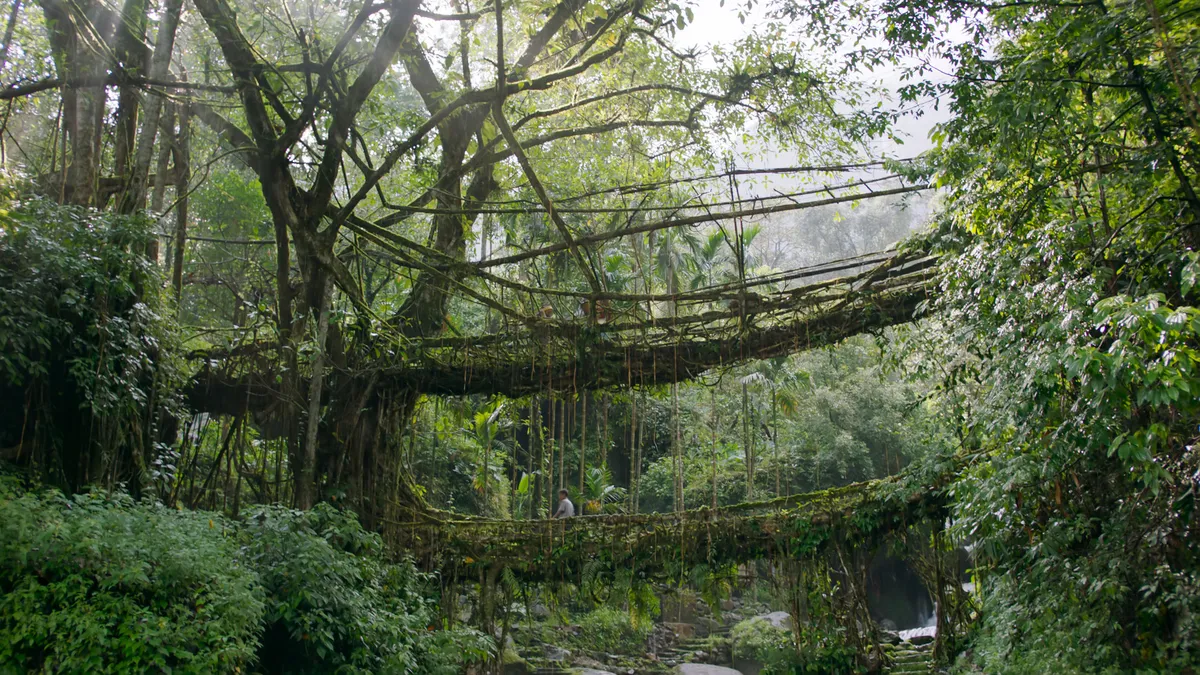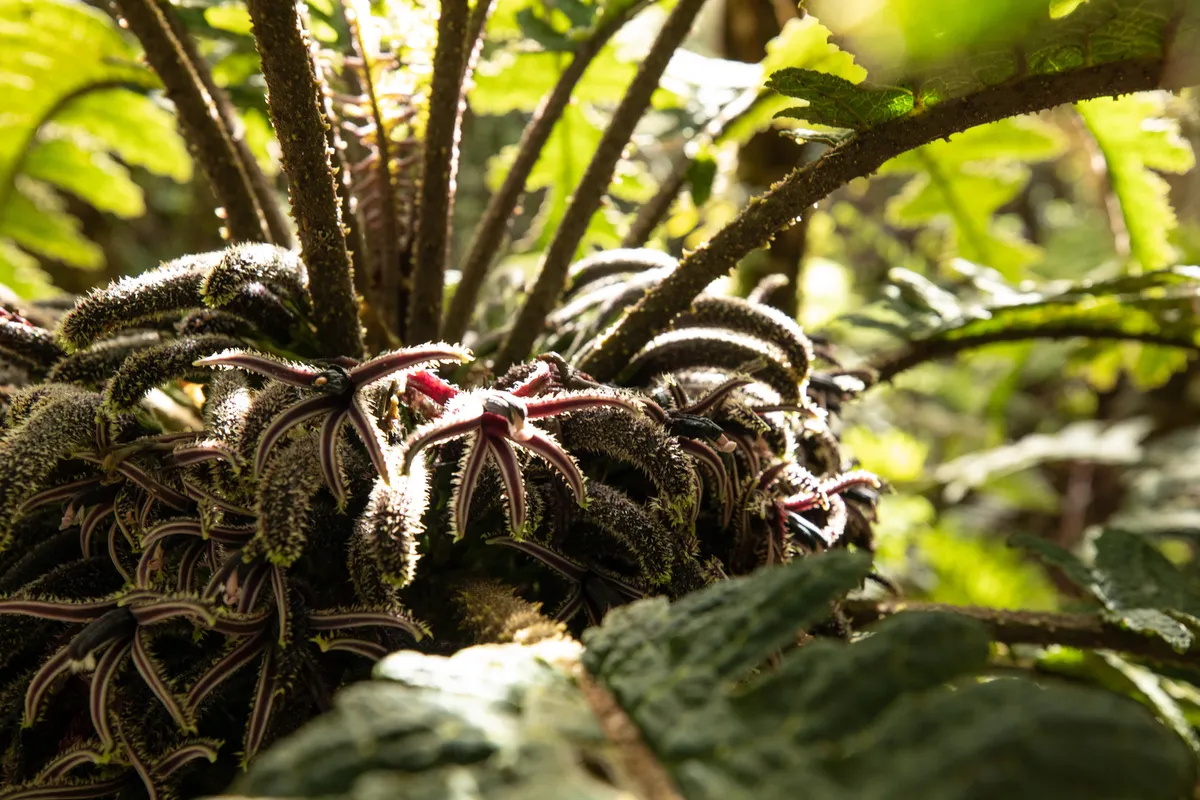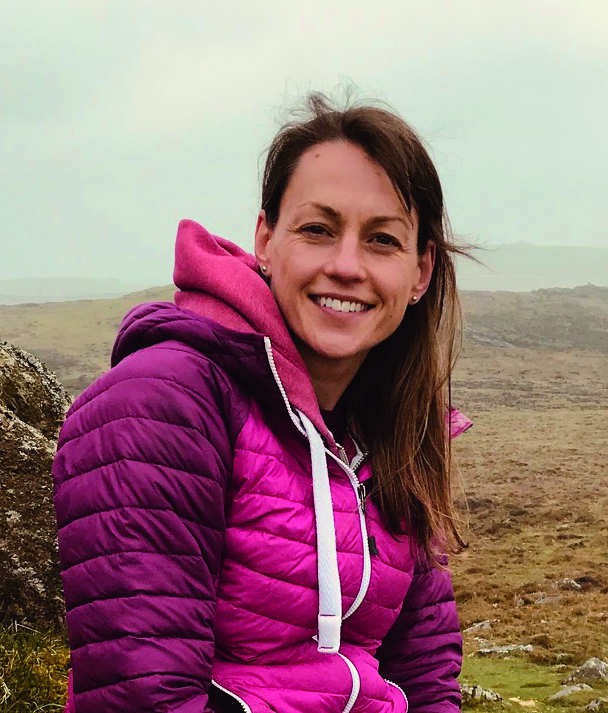On Sunday 13 February 2022, The Green Planet episode 5 aired, bringing Human Worlds to our screens using incredible new filming technology. We met episode producer and director Elisabeth Oakham to find out the behind-the-scenes secrets and stories.
What is the headline theme of this episode?
It's called human worlds, but it's really about the relationships between plants and humans – a relationship that we can't live without. It's harder and harder to make documentaries these days without a focus on the human element of a story. In the past we almost saw the natural world as a separate entity, but it's becoming increasingly apparent that that's not the case. We can't tell the story of plants without referencing how we are related to them, and how we impact each other.
What's a standout sequence for you?
Definitely the living bridges story in Maghalaya, India. It has been covered before, in the 2011 series Human Planet, but it's a beautiful story about the collaboration between humans and plants. It shows that plants not only provide obvious things like shelter and food, but that they also inpsire us.

Maghalaya is supposedly the wettest place on earth, and its rivers become swollen by monsoons in the wet season. Concrete and wooden bridges don't last very long, so the local Khasi people have learned to create bridges from living fig trees to safely cross. They plant a tree on the riverbank and train its aerial roots to the other side, where they take root and 'woody up'. It takes a human lifetime to get to the point where it's a structure that adults can walk on, but then they last for hundreds of years.
And it's not only bridges - the Khasi build retaining walls and even football viewing platforms from these trees. It's a very beautiful and close observation of plants and shows us how we can take cues from them to live in certain environments.
Filming it was tough, though. We wanted to film the double-decker bridge in Nongriat village, which involves trekking down 3,000 steps. The camera team hiked that route five times, meaning they climbed and descended 30,000 steps each, in the rain, carrying all their heavy kit. It was very difficult.
What was your most significant filming experience?
Shooting miconia on Hawaii. Miconia is an invasive species from Mexico and is taking over vast areas of the island and crowding out native plants. Hawaiian plants have evolved to cling onto steep slopes and hold onto moisture, but miconia has big leaves and shallow roots, meaning water runs straight off it. Not only does this create landslides, it's also a real threat to the freshwater security of the island. The challenge with miconia is that it's spread via bird droppings, so it can colonise very inaccessible locations on steep slopes.

The Hawaiians are working hard to control it - it's a deeply important mission for them. Teams go up in helicopters armed with herbicide guns and pick off the plants one by one - they're fairly easy to spot, as they have distinctive purple undersides. They'll never be able to defeat it, they just have to keep the advancing lines under control. In doing so they're protecting thousands of hectares of watershed.
How did you film it?
We couldn't film this with a drone - we had to use helicopters. I've done helicopter shoots in the past, and they are stressful and expensive. Usually you have a few days; I had four hours. I was strapped into this tiny helicopter with no doors, trying hard to see the action on a monitor. We were being buffeted by high winds, sprayed by waterfalls and trying to spot these plants and capture all the action. We did two two-hour flights - one with a cameraman inside the snipers' helicopter; another with us filming the snipers in mid-air from another helicopter. It was a very challenging shoot to direct.
How did the pandemic make things difficult?
It made everything very uncertain - we didn't know if we could travel or get permits. You had to be able to hold several possibilities in your mind at any given moment – so, even if you've managed to schedule a shoot, you could catch Covid before you go, or you could catch it while you're on location and then have to quarantine. We did do remote shoots using local camera teams, but as a director it's difficult not being there to support the team and talk to the scientists.
Watch more documentaries by David Attenborough:
Anything try to eat you?
Nearly! We were filming almond orchards in California, to tell the story of monocultures, which function at the expense of wild plants and ecosystems. There are no insects to pollinate them, so millions of honeybees are trucked in to do the job. The bees seemed to have a thing for our cameraman Ben (possibly, we wondered, because he has a thick black beard and could be mistaken for a bear?) and left everyone else alone.

But at the end of the shoot, a bee got stuck in my hair. I could hear this high-pitched buzz and could feel it struggling around – and I started freaking out! I've had many close encounters with wildlife in my career and have stayed cool as a cucumber - not so with this bee...
Any more memorable moments?
We filmed a really lovely sequence about the holokea, a rare plant endemic to Maui. There are only about 50 individuals left, and we're just losing them. They are found in a relatively intact temperate rainforest in Hawaii - to see them involves a two-hour hike into its interior. But when you get in there, you're in this wonderful intact ecosystem with all these plants that you've never seen before. It was like being in a magical lost world.

What's the takeaway?
I want people to understand that our relationship with plants is troubled. Two in five plants are threatened with extinction, which is shocking. But on the flipside there are lots of passionate people out there doing amazing things to protect plant diversity. We can all make a difference in so many ways - and we'll be happier and healthier if we do. I want people to come away wanting to bring biodiversity back into our lives, be it eating less meat or not mowing their lawns. In return, plants will take care of us.
Main image: Domesticated sunflowers, Liverpool, UK. © BBC Studios
